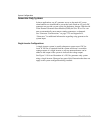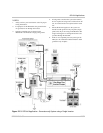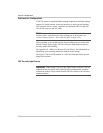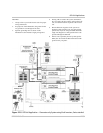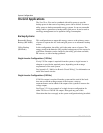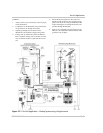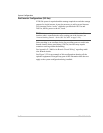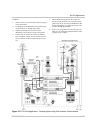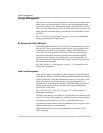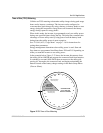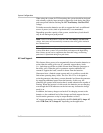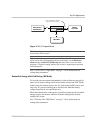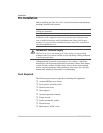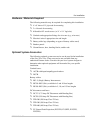
System Configuration
2–44 976-0043-01-02
Energy Management
The Sine Wave Plus can be programmed to control how and when to use
utility power. Advanced features allow for peak load management and
time-of-use billing. Utility management features also allow the Sine Wave
Plus to use renewable energy sources on a first priority basis and only use
utility power if renewable energy is insufficient or unavailable to power
the loads.
See “21 Grid (AC1) Usage Menu” on page 7–16 for more information
about programming these applications.
RE Backup with Utility (SB Mode)
In Standby (SB) Mode, the Sine Wave Plus will automatically use power
from the DC source, generated by the RE source, over grid power even
when the inverter shows it is “charging” from the grid. When there is
excess DC power from the RE source, the inverter will automatically
reduce the current draw from the grid and power the loads from RE
generated power. During a time when loads exceed what the RE can
provide, the inverter will automatically bring in enough AC power from
the grid to power the loads.
See “SB (Standby) - Utility Backup” on page 7–17 for instructions for
setting these parameters.
Peak Load Management
Many utilities impose a surcharge on their customers based on the peak
load used by a facility. To reduce utility peak demand charges, the inverter
can be configured to limit the maximum draw the AC loads place on the
utility. The inverter can be programmed to provide power above a
specified level, eliminating the surcharge. When the utility current draw
reaches the maximum level, the inverter assists by providing battery
powered AC to the loads.
See “13A Grid (AC1) Amps AC” on page 6–27 for instructions for
setting these parameters.
For Peak Load Shaving to be effective, all loads must be connected to the
inverter. For large loads, multiple (or stacked) inverters may be required.
To further ensure the batteries are able to supplement the power
requirements of the connected load, an additional source of power (solar,
wind or hydroelectric) is recommended.
Peak Load Shaving can also be used in addition to the Time-of-Use
(TOU) metering.



